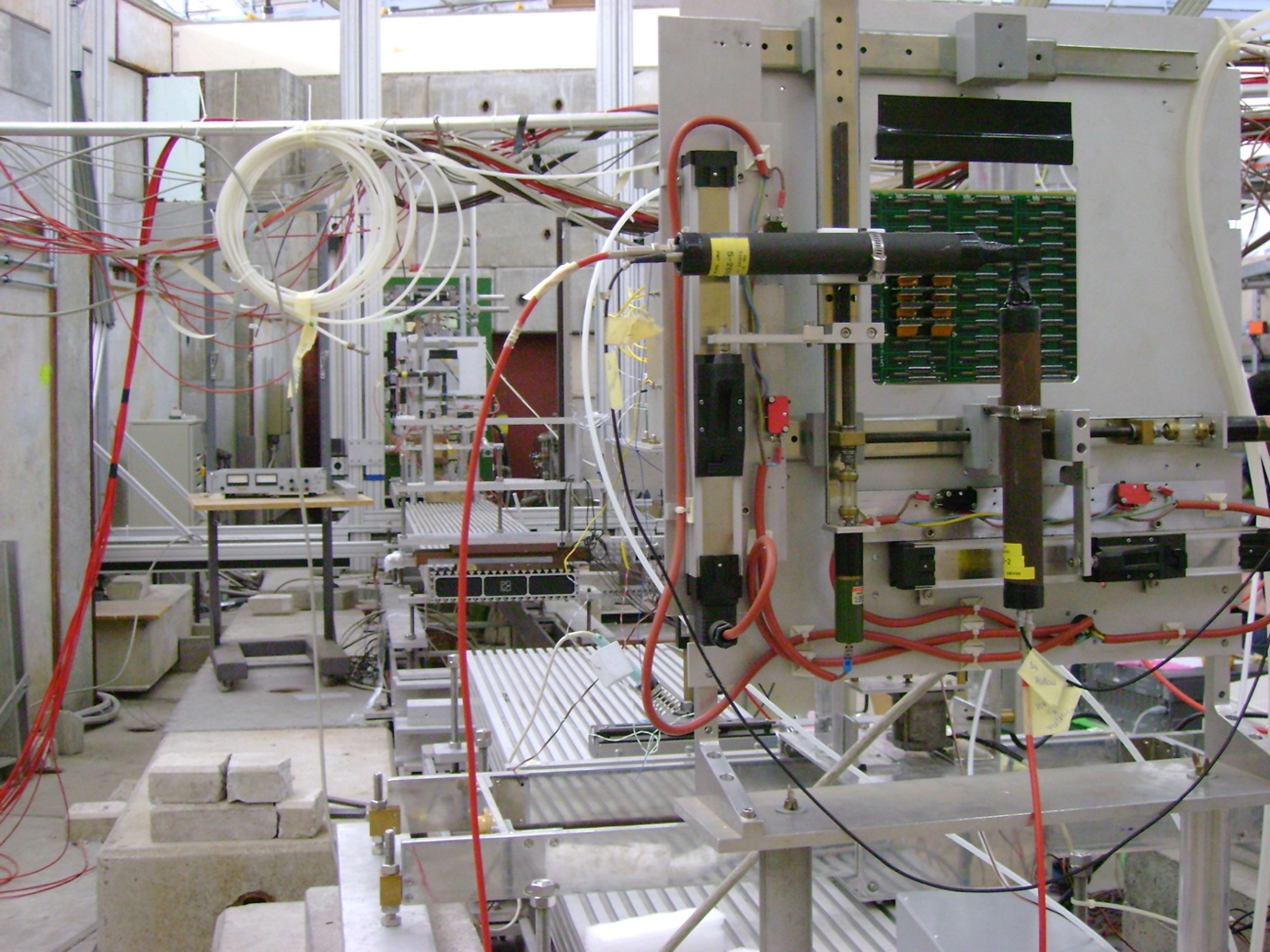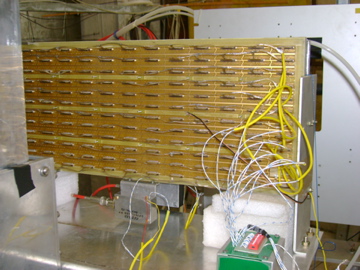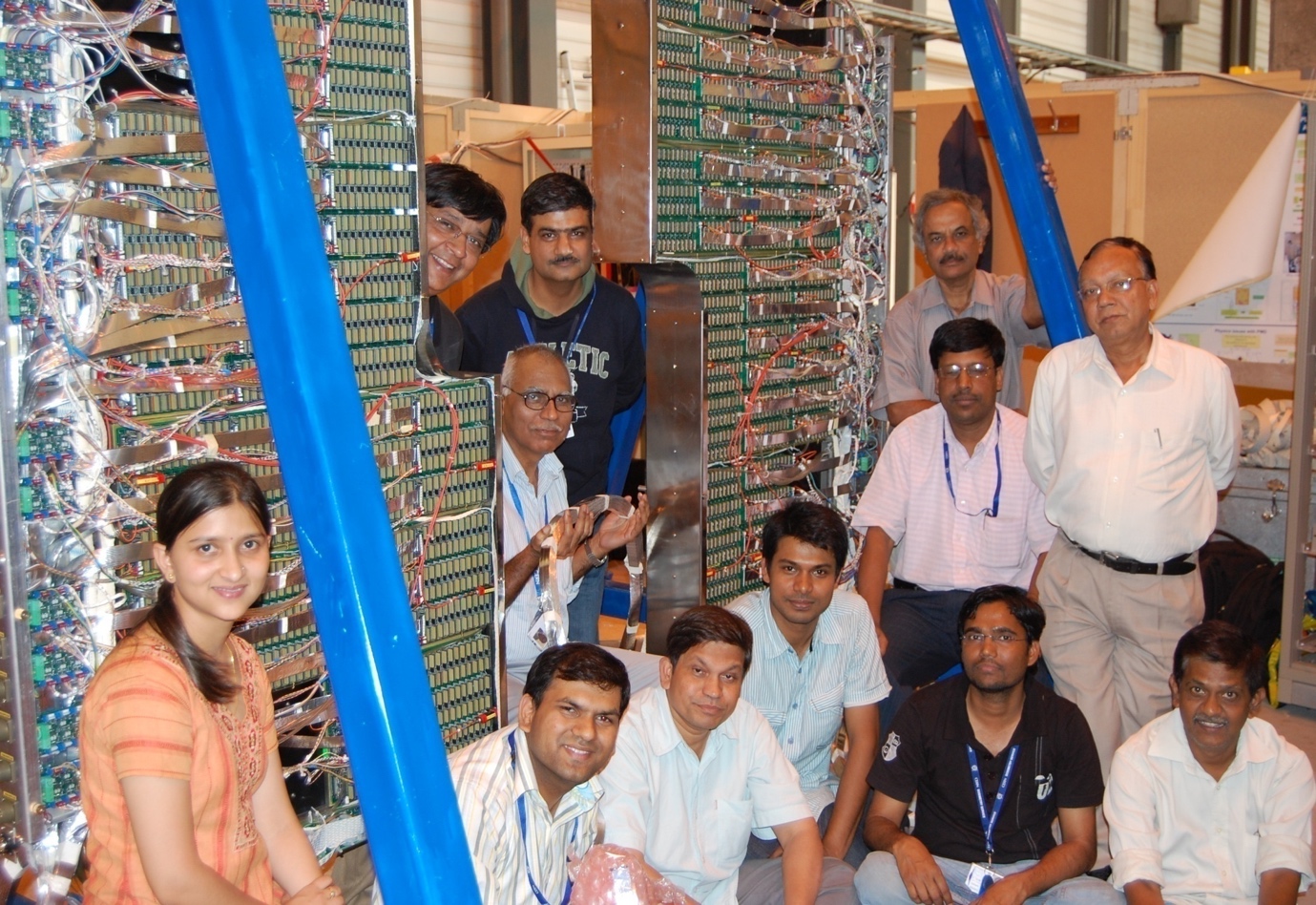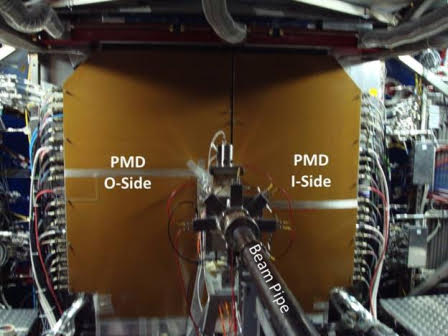STAR PMD
The PMD built for STAR consists of a lead converter 15 mm thick, sandwiched between two planes of detectors with high granularity. The detector plane behind the lead detects photons through the electromagnetic showers they produce in the lead; the one in front helps to reject charged-particle hits. The detectors, which are based on the gas proportional counter, are formed from a honeycomb structure of cells with a copper cathode and tungsten wire anode, and a mixture of argon and carbon dioxide as the sensitive medium. The cells are 8 mm deep with a cross-sectional area of about 1 cm2. Copper walls separate the cells in order to prevent cross-talk by confining low-energy \(\delta\)-electrons to a single cell. A special feature of the design is its unusual aspect ratio, with the cell size and depth being of similar dimensions. In addition, the cathode extends on to the printed circuit boards covering the copper honeycomb so that the anode-cathode distance is less than 2 mm even though the physical separation between the copper cathode and anode wire is 5 mm. This extended cathode ensures uniform sensitivity of the detector throughout the cell volume.
The complete detector is constructed from units with a rhombus shape consisting of 24 x 24 cells. A number of these units, varying from four to nine, are housed in gas-tight enclosures called super-modules, and each plane of the PMD has 12 super-modules. The detector is assembled in two halves, which can be separated vertically and moved independently, with a final hexagonal shape.
The signal from the cells is processed using GASSIPLEX chips, developed at CERN, which provide 16-channel analogue multiplexed information. The analogue signals are digitized and read out using the C-RAMS ADC board. The front-end electronics board, consisting of four GASSIPLEX chips, is a 70 mm rhombus and is directly mounted on the unit module, almost covering the entire area of the detector over 8 x 8 cells.
The full PMD in STAR has about 83,000 cells in the two planes and covers an area of about 4 m2. It is located near the east wall of the Wide Angle Hall at Brookhaven, 550 cm from the interaction point and behind the forward time-projection chamber.
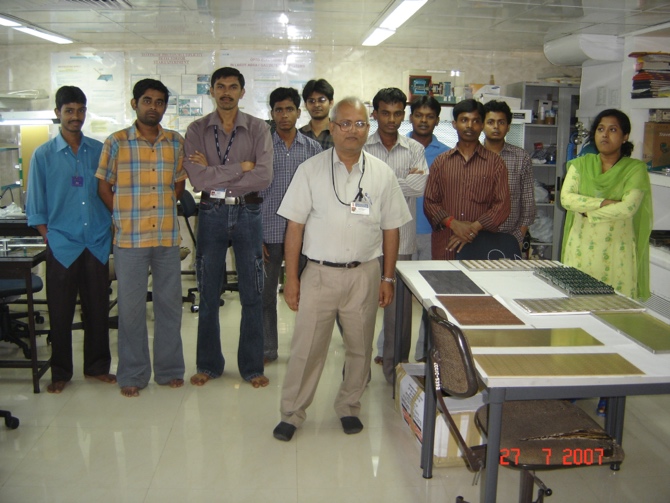
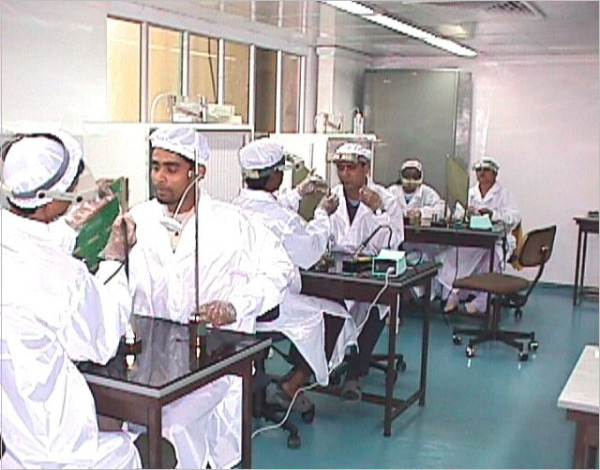
PMD Fabrication

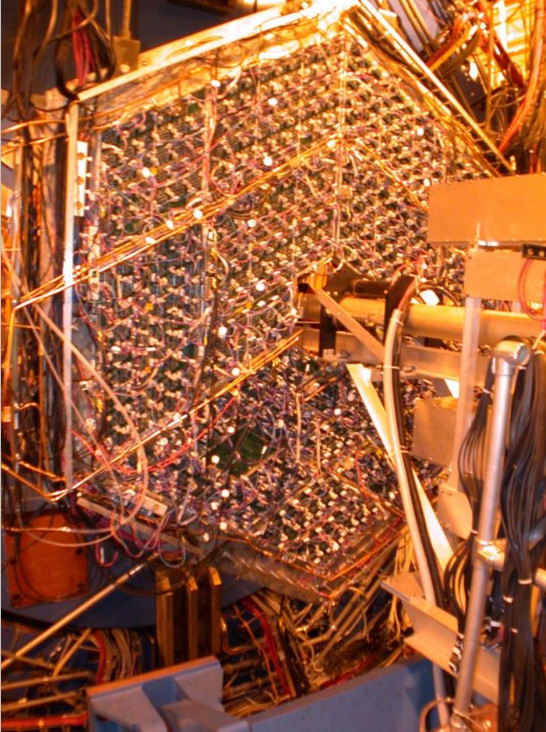
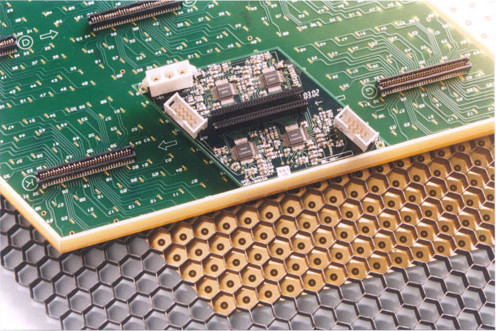
PMD in STAR @ Brookhaven National Laboratory
Publications
| 1. | Title | Multiplicity and Pseudorapidity Distributions of Photons in Au+Au Collisions at \(\sqrt{s_\mathrm{NN}}=62.4\) GeV |
|---|---|---|
| Journal | Phys. Rev. Lett. 95, 062301 – Published 5 August 2005 | |
| Collaboration | STAR | |
| Full list of primary authors | Pawan K. Netrakanti, Bedangadas Mohanty, Subhasis Chattopadhyay | |
| Primary author institutes | VECC | |
| 2. | Title | Multiplicity and pseudorapidity distributions of charged particles and photons at forward pseudorapidity in Au + Au collisions at \(\sqrt{s_\mathrm{NN}}=62.4\) GeV |
| Journal | Phys. Rev. C 73, 034906 – Published 13 March 2006 | |
| Collaboration | STAR | |
| Full list of primary authors | Pawan Kumar Netrakanti, Bedangadas Mohanty, Joern Putschke, Frank Simon | |
| Primary author institutes | VECC, Max-Planck-Institut für Physik | |
| 3. | Title | Center of mass energy and system-size dependence of photon production at forward rapidity at RHIC |
| Journal | Nuclear Physics A, Volume 832, Issues 1–2, 1 January 2010, Pages 134-147 | |
| Collaboration | STAR | |
| Full list of primary authors | Madan M. Aggarwal, Zubayer Ahammed, Sushil K. Badyal, Anju Bhasin, Subhasis Chattopadhyay, Supriya Das, Sunil M. Dogra, Neeraj Gupta, Lokesh Kumar, Bedangadas Mohanty, Tapan K. Nayak, Monika Sharma, Yogendra P. Viyogi | |
| Primary author institutes | PU, VECC, UOJ | |
| 4. | Title | Charged-to-neutral correlation at forward rapidity in Au+Au collisions at \(\sqrt{s_\mathrm{NN}}=200\) GeV |
| Journal | Phys. Rev. C 91, 034905 – Published 20 March 2015 | |
| Collaboration | STAR | |
| Full list of primary authors | Prithwish Tribedy, Arindam Roy, Subhasis Chattopadhyay | |
| Primary author institutes | VECC | |
| 5. | Title | The STAR Photon Multiplicity Detector |
| Journal | Nucl.Instrum.Meth. A499 (2003) 751-761 | |
| Full list of primary authors | M.M.Aggarwal, S.K.Badyal, P.Bhaskar, V.S.Bhatia, S.Chattopadhyay, S.Das, R.Datta, A. K.Dubey, M.R.Dutta Majumdar, M.S.Ganti, P.Ghosh, A.Gupta, M.Gupta, R.Gupta, I.Kaur, A. Kumar, S.Mahajan, D.P.Mahapatra, L.K.Mangotra, D.Mishra, B.Mohanty, S.K.Nayak, T.K.Nayak, S.K.Pal, S.C .Phatak, B.V.K.S.Potukuchi, R.Raniwala, S.Raniwala, R.Sahoo, A.Sharma, R.N.Singaraju, G.Sood, M.D.Trivedi, R.Varma, Y.P.Viyogi | |
| 6. | Title | Photon multiplicity measurements: From SPS to RHIC and LHC |
| Journal | Pramana 60 (2003) 613-626 | |
| Conference | 4th International Conference on Physics and Astrophysics of Quark Gluon Plasma (ICPAQGP 2001) | |
| Full list of primary authors | Bedangadas Mohanty | |
| Primary author institutes | VECC | |
| 7. | Title | Development of a honeycomb gas proportional counter array for photon multiplicity measurements in high multiplicity environment |
| Journal | Pramana volume 60, pages1023–1027(2003) | |
| Conference | 4th International Conference on Physics and Astrophysics of Quark Gluon Plasma (ICPAQGP 2001) | |
| Full list of primary authors | M. M. Aggarwal, S. K. Badyal, V. S. Bhatia, S. Chattopadhyay, A. K. Dubey, M. R. Dutta Majumdar, M. S. Ganti, A. Kumar, T. K. Nayak, S. Mahajan, D. P. Mahapatra, L. K. Mangotra, B. Mohanty, S. Pal, S. C. Phatak, B. V. K. Potukuchi, R. Raniwala, S. Raniwala, N. KRao, R. N. Singaraju, Bikash Sinha, M. D. Trivedi, R. J. Veenhof & Y. P. Viyogi | |
| 8. | Title | First results from photon multiplicity detector at RHIC |
| Journal | J.Phys.Conf.Ser. 50 (2006) 319-322 | |
| Conference | 5th International Conference on Physics and Astrophysics of Quark Gluon Plasma (ICPAQGP 2005) | |
| Full list of primary authors | Bedangadas Mohanty | |
| Primary author institutes | VECC | |
| 9. | Title | Particle production at forward rapidity in d+Au and Au+Au collisions in STAR experiment at RHIC |
| Journal | Nucl.Phys.A 774 (2006) 481-484 | |
| Conference | 18th International Conference on Ultra-Relativistic Nucleus-Nucleus Collisions (Quark Matter 2005) | |
| Full list of primary authors | Bedangadas Mohanty for the STAR Collaboration | |
| Primary author institutes | VECC | |
| 10. | Title | Photon Production in Nucleus-Nucleus Collisions at Forward Rapidities at RHIC Energies |
| Published | PhD thesis | |
| Author | Pawan Kumar Netrakanti |
